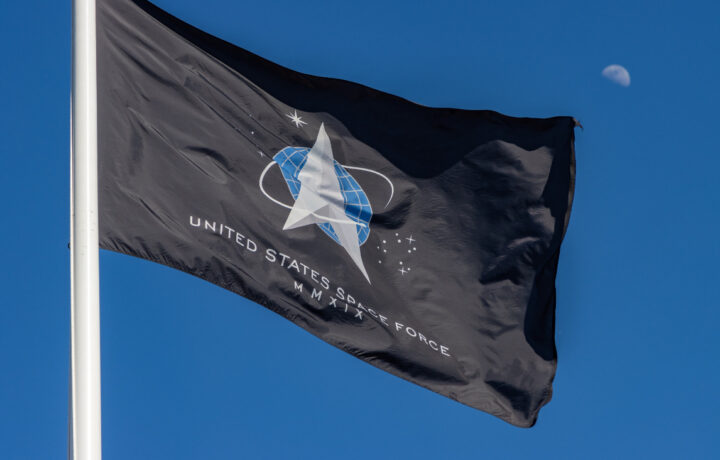The United States Space Force is the sixth and newest branch of the U.S. military, and it was officially established less than five-and-a-half years ago. It announced this week that it will continue a longstanding Space Systems Command (SSC) partnership with the National Reconnaissance Office (NRO) that goes back decades.
SSC had provided launches for NRO satellites, employing legacy launch vehicles such as the Titan, Atlas, and Delta.
Under the SSC’s Assured Access to Space (AATS) organization, it will support the launch of the National Reconnaissance Office Launch (NROL)-145 mission on a SpaceX Falcon 9 rocket on Sunday from Space Launch Complex (SLC)-4 East at Vandenberg Space Force Base, California. It was the tenth overall launch of the NRO’s proliferated architecture and the fourth proliferated launch of 2025.
The payload is believed to be Starshield satellites built by either Northrop Grumman or SpaceX. However, NRO doesn’t generally comment on how many satellites are on board.
Moreover, NROL-145 was the first mission in partnership with SSC AATS under the National Security Space Launch (NSSL) Phase 3 Lane 1 Launch Service NRO Task Order awarded in October 2024, and one of the first two launch task orders on the Phase 3 Lane 1 Indefinite Delivery, Indefinite Quantity (IDIQ) contract.
“This was our first Phase 3 launch, coming only months after establishing this new contract. The Lane 1 path is ideal for shorter, more responsive mission timelines in addition to being the ideal entry avenue for prospective NSSL providers,” said Col. Jim Horne, Launch Execution Senior Materiel Leader.
It was also its third mission in just eight days. A launch date for the next mission has yet to be announced, but it could occur in the coming weeks.
AATS – A Sure Thing
AATS manages the NSSL program, which has 44 launches remaining under the Phase 2 contracts, along with those recently acquired under this Phase 3 contract. It is the Program Executive Office (PEO) that was created to execute the U.S. Space Force’s Core Competency of Space Mobility and Logistics, while securing reliable and responsive launch services to deploy the space-based capabilities needed by the nation’s warfighters, intelligence professionals, decision makers, allies, and partners.
In addition, AATS also operates and sustains resilient and ready launch and test infrastructure to project on-orbit warfighting capability through all phases of conflict and to expand US economic, technological, and scientific leadership. It further delivers servicing, mobility, and logistics capabilities that operate in, from, and to the space domain.
According to the NRO, over just the past two years, it has launched more than 200 satellites, creating the largest and most capable government constellation in orbit in our nation’s history. This year will also see around a dozen NRO launches, with half of those focused on advancing the NRO’s proliferated architecture with additional proliferated launches planned through 2029, ensuring sustained growth and innovation.
The NRO announced in 2023 that it would seek to quadruple the number of satellites it operates, which could increase the number of signals and images it delivers by a factor of ten.
About the NRO
While the U.S. Space Force was launched to much fanfare in December 2019, the NRO was formed in August 1960 following a National Security Council meeting. It was charged with coordinating the United States Air Force’s and Central Intelligence Agency’s (CIA’s) reconnaissance activities. That was later expanded to the U.S. Navy and the National Security Agency. It was officially created in September 1961, but the NRO was generally not known to the public for much of its history. It was not until 1978 that a president even acknowledged that the U.S. carried out reconnaissance from space. It was only declassified in 1992 when the government finally acknowledged its operations.




